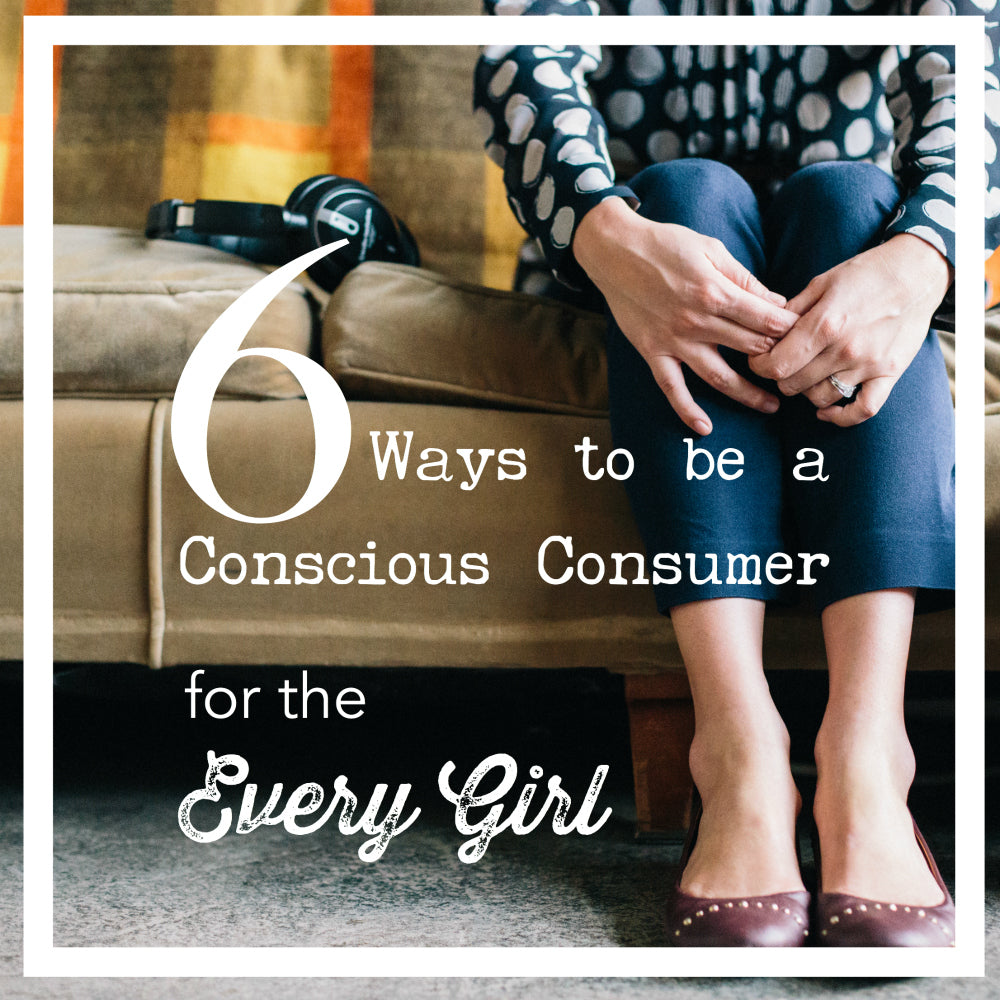
By Brigette Marshall
I am a partially reformed fast fashion shopper. If I’m browsing the mall for my mom’s birthday gift and pass by an “additional 40% off all sale items” at Express or Forever 21, I have an undeniable, irresistible urge to go in. I can’t help but to be fascinated by all the trendy items I can add to my closet for the cost of a fast food lunch or maybe a magazine. I’m hooked on getting a “good deal.”
But I’ve become more aware of ethical issues surrounding high-volume, low-priced clothing production through watching the documentary The True Cost and reading the book Overdressed: The Shockingly High Cost of Cheap Fashion.
I read Overdressed in 2013 and watched the documentary this past November. After finishing these exposés into the industry at two different points in my life, I became horrified both times by my shopping habits and vowed to completely overhaul my purchasing in favor of only ethically and sustainably produced items. However, like most lofty resolutions to follow a strict diet or quit smoking cold-turkey, after a short amount of time I resumed my previous habits and was back at Old Navy.

I’ve realized that making the shift from mostly fast fashion to mostly ethical and sustainable fashion is like making any of those other resolutions. If you don’t get much exercise but decide you want to start running, you do five minutes on the first day—not five miles. You commit to small steps that you know you can achieve and then grow gradually over time.
What these ups and downs of my purchasing habits have taught me over the last few years is that the small changes I’ve been able to commit to can really make a difference. Doing more to shop ethically doesn’t mean completely abandoning prior habits. You don’t have to act in an “all or nothing” way to make an impact. (But if you already can commit 100% to better shopping habits, then that is great.)
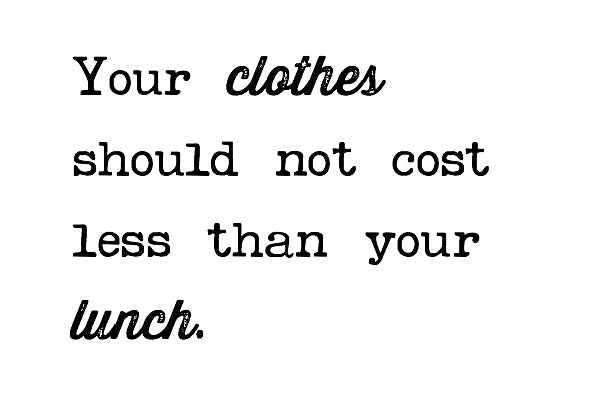
Most of us don’t research sustainable clothing production and ethical issues in developing countries for a living. We’re average consumers who balance our time to shop and research our purchases along with working, commuting, tackling the dishes, waiting for an oil change, going to the post office, celebrating a friend’s birthday, reading the news, and whatever else we have going on during any particular day. Most people don’t want to be supporting companies that exploit child labor, provide dangerous working conditions and unfair pay, or pollute rivers—but we don’t always know where to even begin with this research.
I’ve found, though, that it’s easier than I thought to be an average consumer and still make a difference. Here are six easy ways to be a more conscious consumer.
Online shopping has made it so easy to explore and contemplate our purchases before making them. We can also research the mission and vision of different companies and reference unbiased reviews on if they live up to those goals and if others like the products they sell.
People Tree, based out of the UK and featured in The True Cost, launched over two decades ago as a place to shop for ethical fashion made with sustainable materials that stands up against child labor and pollution. The company partners with Fair Trade producers in developing countries around the world that follow strict standards.

As a reforming fast fashion enthusiast, People Tree caught my eye because it’s both stylish and affordable. They offer shift dresses, printed blouses, trouser pants, patterned pencil skirts, yoga wear, and trendy accessories. Even further appealing to my inner fast fashion freak, they have a sale section with cute tops as low as $18. This color-block top is on sale for $23.37 and is made from 100% organic cotton. The top is produced by Assisi Garments in south India, a social company that provides training and employment for deaf, mute, and economically disadvantaged women. The site also periodically runs promotions, allowing shoppers to take an additional percentage off sale price items as well.
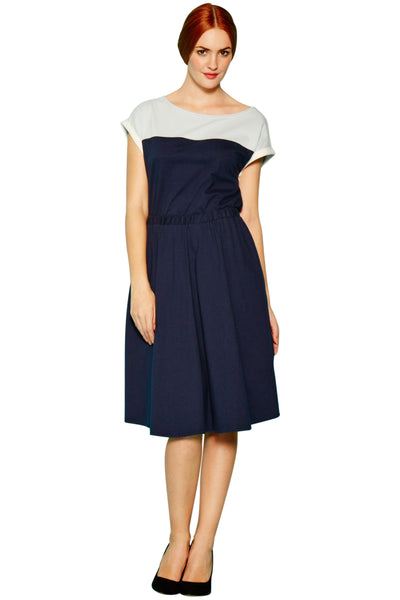
Society B is also a socially conscious marketplace that sells fashionable and reasonably priced goods. The site curates goods from companies that give back to developing communities and also donates 10% of all sales to a selected charity. For example, Society B features good from companies that help women in Uganda rise above poverty , send children in developing countries to school, and provide blankets to homeless shelters. Shoppers can support these causes through purchasing high-quality items they love and can actually afford.
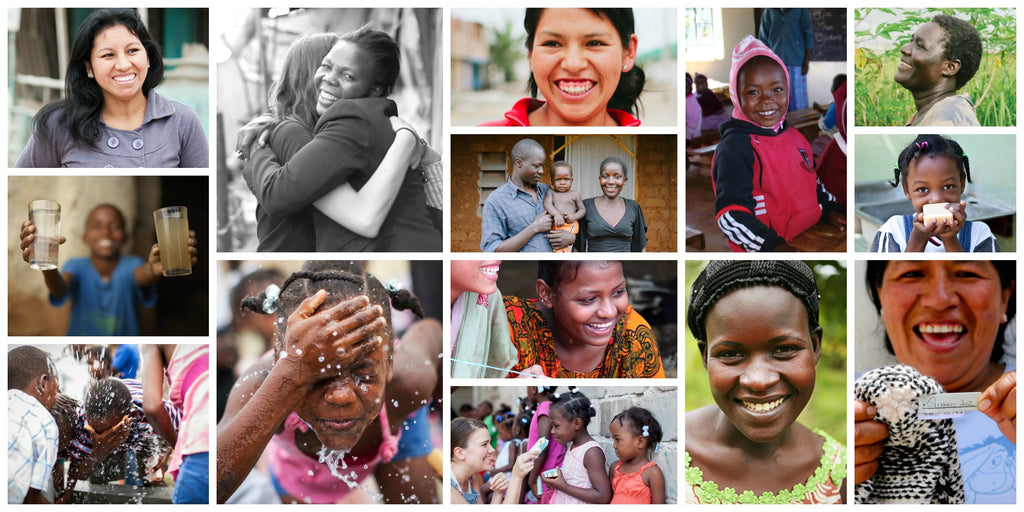
For example, this versatile tee is sold for only $34 and is made of 100% cotton. The garment tag is signed by the person who made the item, and the purchase also supports a sustainable cycle of employment and empowerment in Uganda and Peru.
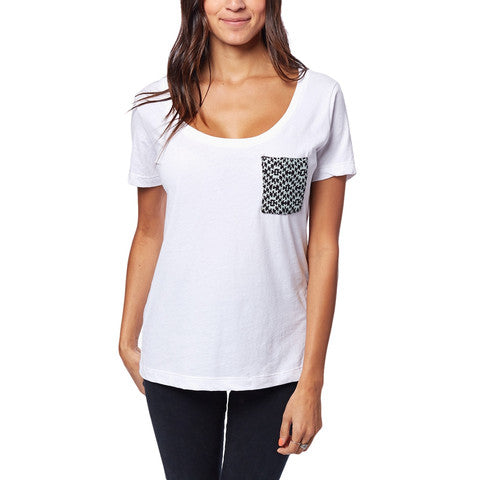
These unique earrings also only cost $34 and are made from casted bullet casing tops that have been turned into gold-plated studs. Each purchase of these earrings provides 7 meals to a child in need. These purchases show that a complete overhaul of your shopping habits isn’t necessary to start making a difference—just one jewelry purchase can help feed a child for a week.

I love that I can purchase items from these sites and feel like I stayed within my typical clothing budget, added items to my closet that I’ll get use from, and supported causes I am passionate about.
Everlane takes the route of selling fashion that is classic and timeless. The site offers well-made tops, sweaters, outerwear, trousers, skirts, scarves, bags, and shoes through its transparent factory policy. The company searches across the world for factories that meet the company’s ethical mandate. Everlane also reveals the cost of what it took to make the product and also the markup. Markup for Everlane is about 2.2x as compared to the traditional standard of 5-8x. True cost of production and information about the company that manufactured the specific product are available for each item.

Some large and established retailers are using their success to make a sizeable impact on doing more good. Most consumers already know about companies like Toms and their “One for One” initiative or Target and their donations to schools.
H&M now includes H&M Conscious, which is committed to seven areas: providing fashion for conscious consumers, rewarding responsible partners, being ethical, being climate smart, recycling, using natural resources responsibly, and strengthening communities. As a large retailer, H&M is one of the leading users of organic cotton in the world. Cotton grown without chemicals are better for producers, pollution, and shoppers. The company is aiming for all cotton in their line to come from “more sustainable” sources by 2020. This includes organic cotton, better cotton, or recycled cotton. Items made using organic cotton are marked, and it means that cotton was grown according to strict standards and checked by an independent certification body. H&M is also an active member of the Better Cotton Initiative (BCI), which promotes better farming practices including using less water and chemicals.
The classic way to shop sustainably—buying preworn clothing items—is now available through the convenience of online shopping. Buying thrift items no longer requires sifting through racks at Goodwill or laundry bins at a garage sale (though treasure hunting is a fun activity).
thredUP is a huge online consignment marketplace, where shoppers can browse thousands of gently used items that the company certifies for quality. The company is dedicated to “inspiring a new generation of consumers to think secondhand first.”
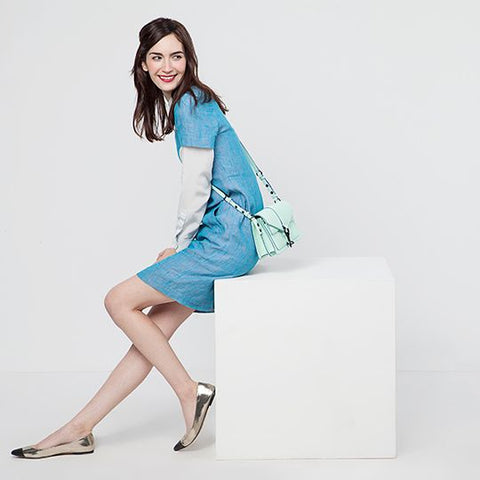
The company further promotes an affordable shopping experience by providing free shipping over $70 and free returns. Through thredUP Everyday, if a shopper spends over $150 in a calendar month, they receive free shipping through the end of the following calendar month. thredUP also gives back through ThredUp for Schools. Shoppers select a K–12 school, and 5% of every purchase they make is donated to that school. To date, over $68,000 has been donated to over 18,000 schools.
Tradesy is also a marketplace for secondhand fashion that sells low-cost items and designer items. Items are shipped from the buyer directly to the seller, but the company provides a reassuring buying experience by providing free returns and personally reviewing each returned item. If an item is misrepresented, the buyer gets a full refund on their purchase.
The Real Real provides a consignment site for high-fashion luxury enthusiasts. All items received are inspected and authenticated by an in-house team that inspects brand markings and other distinguishing factors.

In addition to providing a marketplace for buyers, these sites also provide easy ways to recycle your old garments for extra income. Online consignment shops mean your used items are available to the whole Internet marketplace instead of just the shoppers at your Goodwill, meaning there’s a good chance that your clothing will find a new home.
Buying preworn fashion online is an excellent convenience, but buying it the old-fashioned way can turn into a hobby or even an obsession. Garage sales, flea markets, rummage sales, consignment stores, antique shows, estate sales, Goodwill trips, and auctions are all Saturday afternoon activities that provide a fun way to spend a few hours in a more productive way than a weekend TBS movie marathon. Plus, you’re spending your money on recycled items and keeping your dollars in the local community.
I’ve found a lot of easy ways to locate these events:
I’ve also found that the more you get involved in the resale scene the more you become privy to other events through word of mouth, fliers, and other promotions.
National resale chains like Plato's Closet are great places to score gently used, name brand items for cheap. On a recent trip last fall I uncovered a white leather A-line Gianni Bini skirt in like-new condition for only $10 that I paired with a black top and wore to a rehearsal dinner. It’s something I’ll be able to repurpose for other winter events over the next few seasons because it’s a classic piece in a neutral color.
There are so many ways to begin building a more ethical and sustainable wardrobe, though we likely don’t have a wardrobe that’s fully composed of these pieces. But we can still properly take care of the items we do have, whether they are made ethically or not, to make sure they don’t end up in landfills or as castoffs. An inexpensive top from Old Navy or Forever 21 can last a lot longer with proper care.
Donating castoffs to Goodwill is a great option, but the chain gets so many donations that they can’t accept them all, and unsold clothing is compressed into bales and sent to secondhand textile processors. Most items then end up overseas. For example, Trans-Americas Trading Co. processes close to 17 million pounds of used clothing per year, according to the Overdressed excerpt in Slate.

So instead of tossing our items in the castoff pile, we can instead take better care of our garments by washing in cold water on gentle cycles, air drying, getting items dry cleaned, repairing damaged items, and tailoring items that don’t fit. Items can stay in your closet rotation for the long haul. And once they are worn beyond repair, they can be repurposed as painting/gardening clothes or cut, sewn, and turned into rags and towels.
You’ll have fewer clothing items to take care of if you instead invest in fewer but more well-made and versatile items. Fast fashion is affordable and allows you to buy a lot of clothes for a moderate sum of money. But instead of a variety of tops from Zara, why not purchase one well-made blazer? A lined and structured wool blazer works in a variety of scenarios—from the workday to a dinner out—and can stay in your closet for years.
Investing in key pieces allows you to adopt more of a signature style. Hard-earned dollars can be put towards beautifully constructed garments that make the wearer look chic.
However, if you have to resort to fast-fashion items, make a point to buy pieces that are versatile. Buy tops that can work well under a cardigan for work or over jeans and leggings for the weekends.
I am still a partially reformed shopper. I still do visit old staples at the mall, but I am more aware of ethical retailers and secondhand items, and I’m trying to add more consciously collected goods to my wardrobe.
I still have a lot of moments of weakness. As I’m writing this, I’m wearing a top I found on an Old Navy clearance rack during a fit of “Oh my goodness, it’s all so cheap!” But I’m wearing it under a pink Sears Roebuck and Co cardigan purchased at a vintage fashion shop nearly 10 years ago, and it’s accessorized by my gold Ali earrings from Society B. I actually wear these earrings almost every day.
I’ve always been a shopper and often feel guilty about the time I spend purchasing more and more material goods that fill my house and my closet. I’m focusing on buying fewer items and spending my money on experiences rather than things, but I’m not quite there yet. But I’m focusing on exploring these 6 alternate clothing options as much as possible to at least do more good though my shopping habit. I’m glad there are now easier opportunities to support employment in developing countries and recycle and repurpose old clothes online.
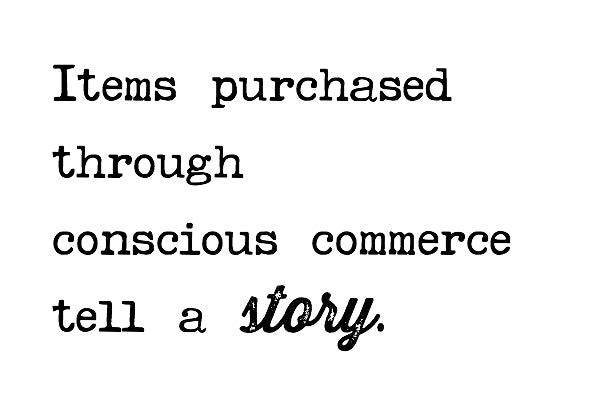
I love conscious commerce because I love having items that can tell a story. It’s great when you get a compliment on a clothing item. We often say “Thanks, I found it on the Target rack at the front of the store,” but it’s so much more satisfying to talk about an initiative the purchase supported or the experience of sorting through a bin at a church rummage sale and finding a great silk vintage scarf.
I’d encourage everyone to find small ways to make their wardrobe more ethical and to do more good with their discretionary income…and have fun along the way.
 This story was written by Brigette Marshall. In addition to being a Society B customer, she is a writer, a mother to an energetic toddler named Kate, and a wife to a goofy husband that runs their kitchen like his own personal restaurant. She works as a project manager for an educational publishing company, volunteers at a gym day care center, and is working on an MBA in Organization Development. In her free time, she tries to train for upcoming races and keep up with her long reading list. She likes browsing thrift stores, flea markets, and garage sales for items to add to her small and already crowded townhouse; exploring local breweries and wineries with her husband and friends; and keeping up with her guilty pleasure—the Bachelor.
This story was written by Brigette Marshall. In addition to being a Society B customer, she is a writer, a mother to an energetic toddler named Kate, and a wife to a goofy husband that runs their kitchen like his own personal restaurant. She works as a project manager for an educational publishing company, volunteers at a gym day care center, and is working on an MBA in Organization Development. In her free time, she tries to train for upcoming races and keep up with her long reading list. She likes browsing thrift stores, flea markets, and garage sales for items to add to her small and already crowded townhouse; exploring local breweries and wineries with her husband and friends; and keeping up with her guilty pleasure—the Bachelor.
Great article, Brigette. Very informative and I learned a lot, especially the fact that I am not nearly as socially responsible with my shopping as I should be! Thanks for the great tips.
slowfashionuy
February 19, 2017
Nice information, its turn out soo important to try to be as conscious and sustainable as we could be while buying new stuff.